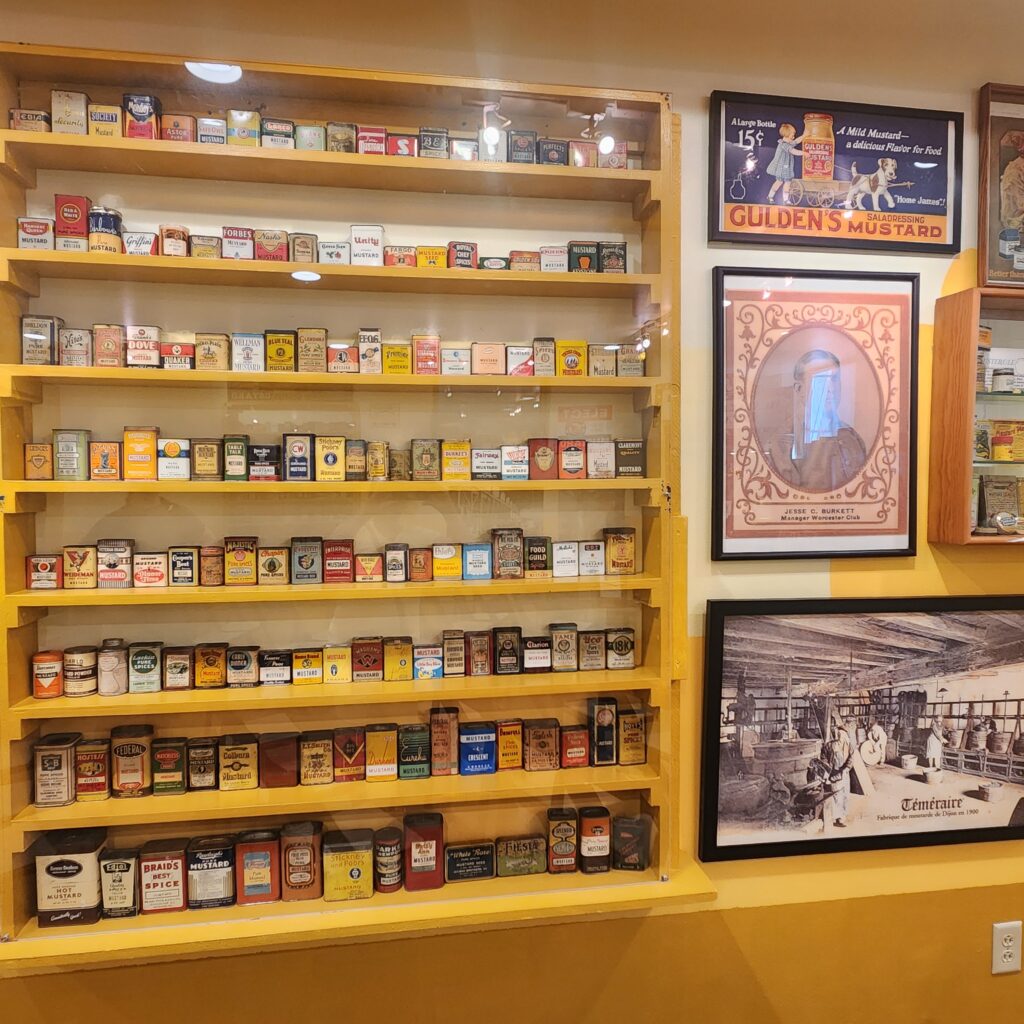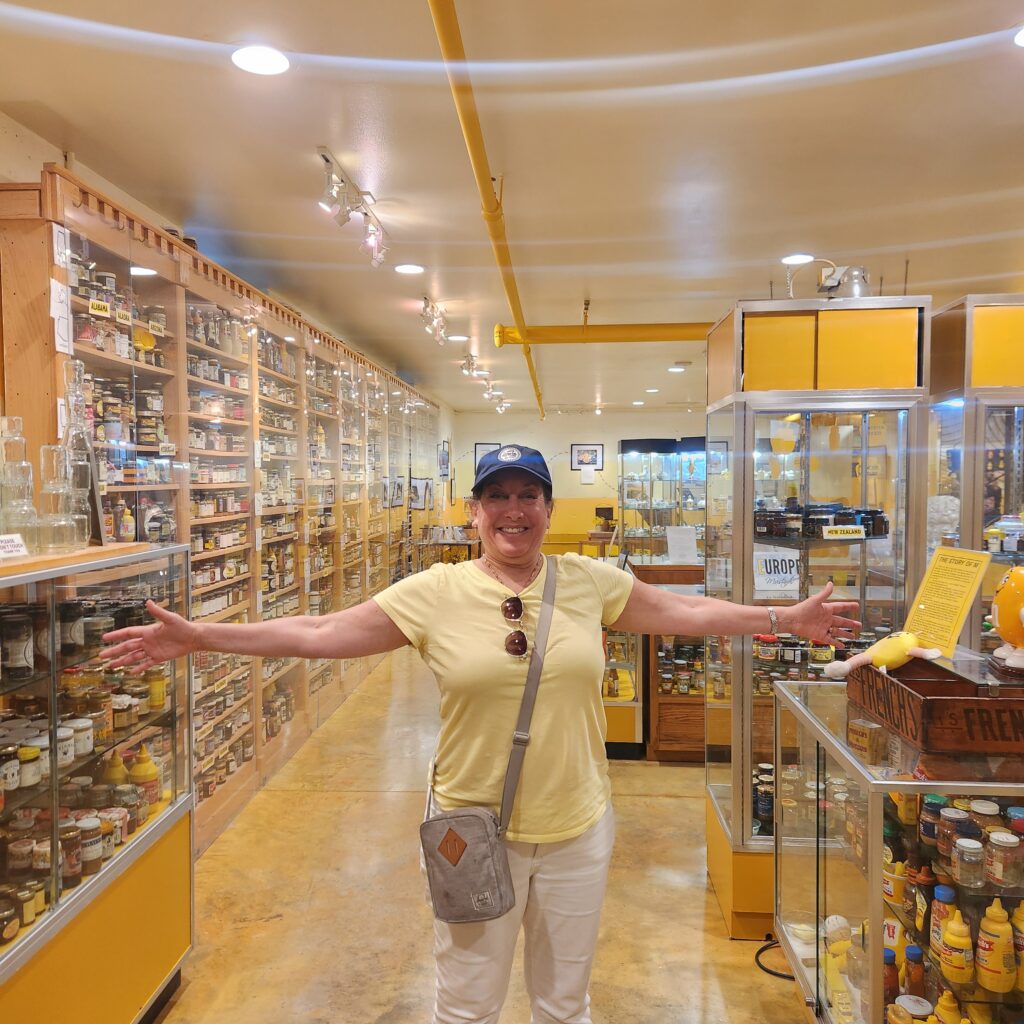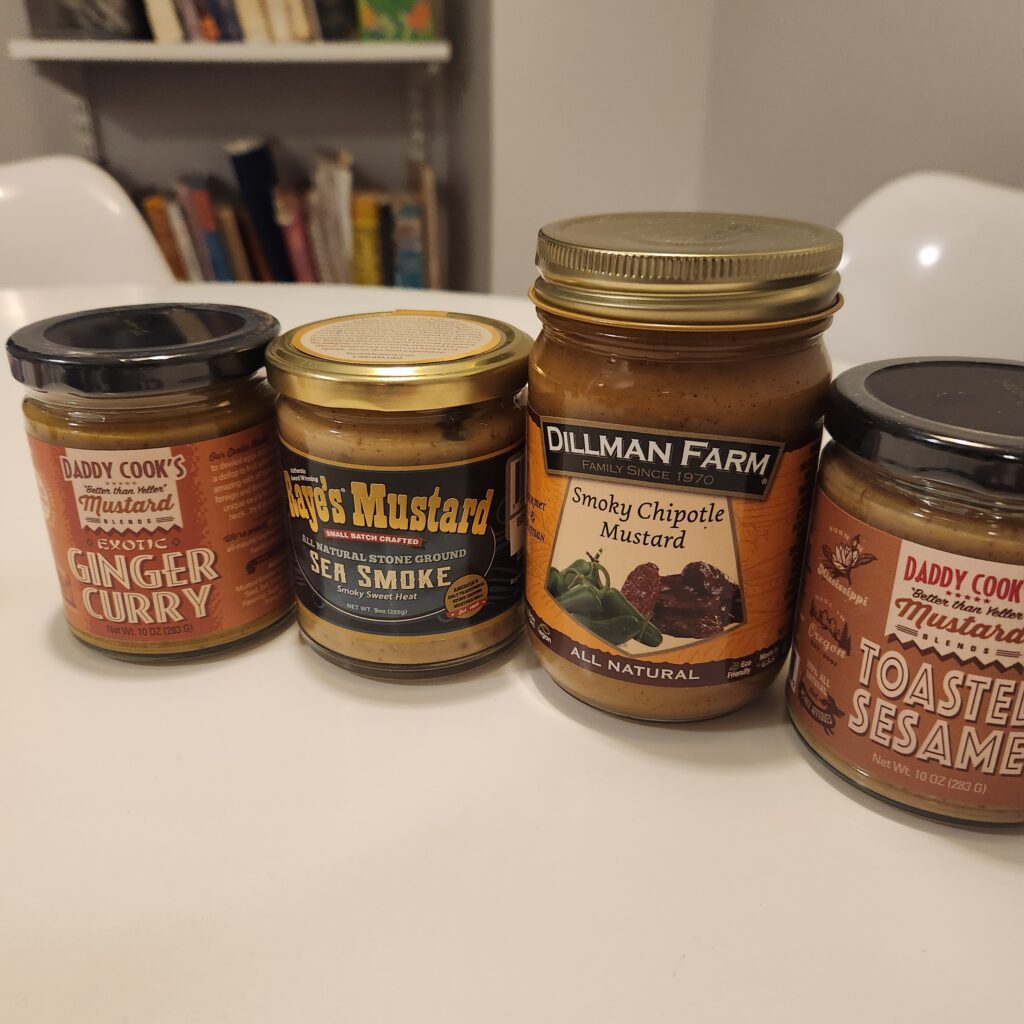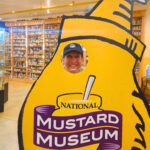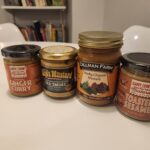Last month, I traveled to Middleton, WI to visit my son who moved there in February to start a new job. I’d never heard of Middleton, a suburb of Madison, but I learned it has one incredible claim to fame; it’s the home of the National Mustard Museum. Founded in 1992, the Mustard Museum features more than 6,000 jars of mustard from across all 50 states—New York had an impressive showing—and more than 70 countries.
I love mustard. There, I said it. For me, mustard is the GOAT of condiments (followed a close second by hot sauce). While it’s often lumped together with the obviously inferior condiments, IMHO, of ketchup and mayonnaise, it’s the clear winner for me.
At The Sylvia Center, we teach our students how to flavor food healthily, so mustard is a great choice for seasoning and a way to make lots of foods more exciting. It packs a big, flavorful punch to any dish, without adding a lot of salt, sugar, or fat. It also lasts for a long time in the pantry or fridge, is relatively low cost, and comes in a huge number of varieties that can be used in many types of cuisine. Chinese hot mustard is a great addition to a stir-fry, while a Jalapeño-flavored version is the perfect boost to a chili-packed salsa. Mustard is also a great addition to many salad dressings, sandwiches, and sauces, and pairs well with vegetables and cheeses.
A Condiment with History
So, who were the brilliant people to invent mustard? The Romans are the first credited with experimenting with it as a condiment. Historians write that the Romans mixed unfermented grape juice with ground mustard seeds to make “burning must”, which is also how mustard derived its name.
Native to the Mediterranean region, the mustard plant, with its beautiful yellow flowers, comes from the Brassicaceae (Cruciferae) family (similar to brussels sprouts and cauliflower). And its leaves are edible, too! To make the condiment we know and love, whole, ground, or cracked mustard seeds are mixed with water, vinegar, lemon juice, or other liquids, to which various salts, flavorings, and spices are added to make a wide variety of options.
So Many Mustards, So Little Time
At the Mustard Museum, they feature many varieties with which you may be familiar, such as deli brown, Dijon, and coarse-grain, as well as exotic varieties, hot and sweet, and even those flavored with fruit. At the tasting bar—yes they have a tasting bar—you can sample the world-wide competition winners and a spoonful from almost any jar for sale in the gift shop. I did a good job embarrassing my son while tasting at least 20 different varieties of mustard.
Steering away from more common offerings, I leaned towards the more exotic types. I didn’t love the fruit-flavored mustards, although yuzu was tempting, and shockingly, frequent readers of this blog will be surprised to learn that I didn’t care for the honey mustards. My bees would be disappointed in me! I selected curry, smokey, chipotle, and sesame mustard to take home.
Surely the greatest characteristic of mustard is that it appeals to so many different tastes. This is exactly what our students learn in our classrooms—taste, experiment, and create—–and your food and world will be delicious and come to life!
Until next time, spice it up in the kitchen. And if you find yourself in Middleton, WI next month on August 2, take part in National Mustard Day!
Barbara, Executive Director
Barbara is The Sylvia Center’s Executive Director and a passionate beekeeper. Learn more about her bees here!



